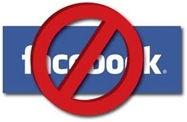Some companies really get customer relations and service and make it the lifeblood of their culture. Zappos, Virgin America, Southwest Airlines, LL Bean, Amazon, Starbucks and my local Walgreens are a few brands that come to my mind when I think of customer-centric brands. But why do they seem to be the exception rather than the rule? These businesses understand the value in making a customer feel important at every interaction – not just the sale.
Customer service and CRM (customer relationship management) are often described separately in business but in today’s customer-centric organization, service is but one part of CRM. CRM is most often described as a technology process, and many companies – especially small businesses – therefore don’t think of it as applicable to their organization. They may Google the term and be immediately overwhelmed with articles full of terms like software, implementation, SaaS and enterprise. Wikipedia’s definition states, “It [CRM] involves using technology to organize, automate, and synchronize business processes—principally sales activities.”
I like to think that the definition of CRM today goes well beyond technology. I did a recent webinar on the topic of CRM with a panel of really intelligent tech leaders, including a former editor of CRM Magazine, a former CRM analyst and an executive from CRM software vendor, Sugar CRM. These guys are very smart and we covered some great topics – including software, customer service and even social CRM. But we only touched upon the fact that CRM is more than tech.
CRM is the lifeblood of how everyone in your organization manages and maintains relationships with customers.
- Do you want more customers?
- Do you care about repeat customers?
- Do you you want to have a relationship, not just a deal, with your customers?
- Do you want to see more revenue come in the doors of your business, or higher figures in your next raise as a result?
- Do you like it when happy customers refer your business, service or products?
- Do you care when unhappy customers take to social networks like Twitter or reputable business management entities such as The Better Business Bureau to complain about your business?
Then you care about CRM. And so should your employees – not just the sales team.
In that same webinar I suggested perhaps it would help businesses to think of the “M” in CRM as “marriage,” rather than management. What I mean by that is to really think about your customers as a long term commitment. Don’t “manage” them so much as keep wooing them, romancing them with outstanding products and services, and keep the love alive.
To do that successfully, every employee plays a role in treating customers right. Not just sales, not just customer service, not just the cashier at the counter and most certainly not a piece of software. Don’t leave it up to just one department. If the customer is treated poorly by just one employee in your organization, THAT is the experience they will remember. THAT is the experience they will share with their friends. Think of all the marketing, advertising and sales dollars that fly out the door – wasted – when that happens.
Here’s an example. A customer in a retail store is shopping and a salesperson on the floor stops to politely help. The customer spends an hour with the salesperson – finding more than they originally were seeking, but so pleased with the experience that she decides to buy everything that the salesperson has suggested. The customer heads to the cashier and the line is long. There is one cashier. The customer waits longer than she was happy with but nonetheless, makes it to the counter. When she gets there, the cashier is grumpy, rude and impatient, especially when the customer asks if she can have some boxes with her purchase. In response to the rudeness, the customer decides to leave all the items on the counter and walk away from the purchase. She decides that, now that she knows what she wants, she can easily go online and order it elsewhere rather than fork over her hard-earned money to a business who will treat her as though she doesn’t matter.
Another example is an airline. There are multiple exchanges with customers during just one purchase. There is the point of purchase, the airport experience and the experience on the plane. Say a customer finds a great deal on a flight. He checks in at the airport and sails through security. He’s happy. But on the plane, the flight attendant is snappy and condescending when he tries to order food – and her attitude gets no better, sighing whenever asked for something and generally making him – and all other passengers – feel as though they are an inconvenience. Since he can’t express himself on the plane for fear of escalation, he takes to Twitter and Facebook after his flight, encouraging his 15,000 “friends” that no matter how inexpensive, the experience with that airline isn’t worth it and that they should spend their money with another airline.
Forget what you know and are probably thinking about typical customer behaviors, point of purchase abandonment statistics, or how far reaching (or not) just one customer’s influence is on what percentage of people. Forget about the traditional definition of CRM. Again, instead ask yourself if you care about sales, customers and revenue. Do you care about reputation and brand management? Do you care about the highest return on your marketing and advertising investments?
If the answer is yes, then teach your employees – not just sales or customer service – what CRM means and what role they play in it for your organization. How do you want customers to feel after an interaction with your business? What role does each employee play in making that happen every time? How flexible are policies? What do you want most from your customers and why?
From the point of sale to the marketing department, billing to service issues, every employee is crucial to making CRM work for your business. It’s about the way prospects find you, why they listen and how they are wowed enough by your business to become customers. It is why your customers become repeat customers. And it’s about the way happy customers tell their friends. As it is in any relationship, you’ve got to keep working at it to keep it great. Don’t take it for granted and make sure you communicate well.
“Customer-centric” just isn’t enough anymore. Technology doesn’t manage relationships on its own. Rather, the best businesses will embrace a new type of CRM throughout their organization – showcasing customer commitment at every level.
 Four Reasons Your Brand Should Avoid Facebook
Four Reasons Your Brand Should Avoid Facebook 
 Unless you’re living under a rock, you’ve likely heard of Justin Bieber, the latest singing sensation that has teens and preteens around the world screaming and sobbing just for a quick, but memorable, glimpse of his dashing smile and famous hair. Last Sunday afternoon, I took my seven (going on 17)-year old daughter to see the new Justin Bieber movie “Never Say Never,” which came in second place at the box office. As I sat there watching this surprisingly inspiring movie, I noticed my little girl get a twinkle in her eye and I began to understand the intriguing phenomenon known as “Bieber Fever.”
Unless you’re living under a rock, you’ve likely heard of Justin Bieber, the latest singing sensation that has teens and preteens around the world screaming and sobbing just for a quick, but memorable, glimpse of his dashing smile and famous hair. Last Sunday afternoon, I took my seven (going on 17)-year old daughter to see the new Justin Bieber movie “Never Say Never,” which came in second place at the box office. As I sat there watching this surprisingly inspiring movie, I noticed my little girl get a twinkle in her eye and I began to understand the intriguing phenomenon known as “Bieber Fever.”




